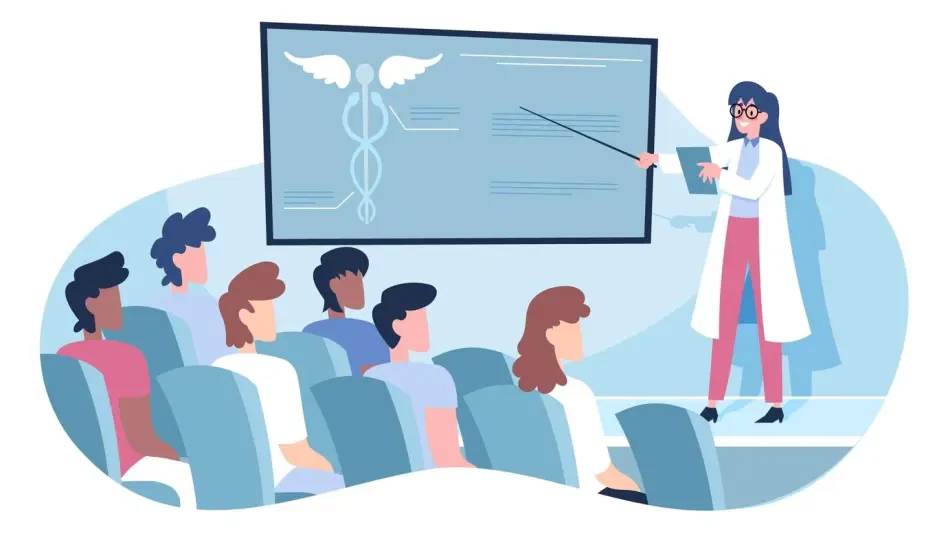South Korea faces a significant challenge in its healthcare sector, as medical education policies undergo a rollback to reduce student enrollment quotas. This decision, influenced by prolonged student protests, aims to stabilize the educational environment but raises concerns about specialist shortages within the healthcare industry. As the country navigates this complex landscape, various sectors, including healthcare infrastructure and real estate investments, seek opportunities and solutions.
Current State of South Korea’s Medical Education and Healthcare Sector
South Korea’s medical education system has long been a cornerstone of the nation’s healthcare infrastructure, providing essential training and resources to future healthcare professionals. However, recent policy changes have impacted the landscape, notably the rollback of medical school enrollment quotas to 3,058 students. This move has significant implications, affecting both the continuity of education and the availability of healthcare services. Major institutions like Seoul National University and Asan Medical Center have played pivotal roles in shaping the educational framework, navigating policies that directly influence healthcare delivery standards. The government’s attempts to stabilize the educational environment underscore the crucial connection between educational policies and healthcare services.
In addition to educational policies, the healthcare sector relies on a robust infrastructure of hospitals and training facilities. These institutions must adapt to fluctuating student numbers and training demands. Institutions face pressure to ensure quality education while grappling with the implications of reduced student intake on workforce planning and healthcare service delivery. Compounded by widespread student protests that disrupted clinical training, these challenges highlight vulnerabilities in South Korea’s healthcare training ecosystem. Stakeholders are tasked with finding ways to maintain an effective balance between educational quality and the pressing need for specialists in the healthcare field.
Key Trends Shaping Medical Education and Specialist Availability
Evolving Trends and Influences
Significant trends are reshaping the medical education landscape in South Korea, with technology leading the transformative wave in training methods. Virtual reality and artificial intelligence applications are revolutionizing traditional training models, offering innovative solutions to educational challenges. These technologies enhance the learning experience, providing interactive and immersive platforms that bridge gaps created by training disruptions. Meanwhile, consumer demand for healthcare services is shifting, emphasizing the need for specialists across various fields, such as emergency medicine and pediatrics. This shift places additional pressure on the healthcare sector to align educational policies with workforce demands.
Market Data and Growth Projections
Current data highlights the pressing issue of specialist shortages, with enrollment in medical schools capped due to policy changes. This limitation has exacerbated workforce discrepancies, leading to heightened demand for healthcare professionals. Projections indicate a growing need for workforce expansion and training capacity enhancements in the coming years. The sector anticipates changes in healthcare delivery models, driven by the evolving educational dynamics and increasing patient needs. Strategic investments in infrastructure and training innovations are essential to address these shortages and meet future healthcare demands effectively.
Challenges and Complexities in Balancing Education and Specialist Shortages
Navigating the complexities of workforce planning and educational continuity remains a formidable task. Institutions must strategize effectively to ensure that educational policies align with the critical need for healthcare specialists. Technological advancements present both opportunities and obstacles, necessitating an integration of innovative solutions to mitigate training disruptions. Regulatory challenges further complicate the scenario, demanding agile responses from stakeholders to adapt to changing policies. Addressing specialist shortages requires a multi-faceted approach that includes comprehensive planning, regulatory adaptations, and technology-driven solutions to meet existing and future healthcare needs.
Regulatory Environment Impacting the Medical Education Sector
South Korea’s medical education sector is highly influenced by rigorous laws and standards that shape training practices and healthcare delivery methods. Regulatory changes present both challenges and opportunities as institutions strive to comply and adapt. The implications of these regulations extend to clinical training and curriculum development, requiring constant attention from educators and healthcare providers. Compliance remains crucial, not only to adhere to legal standards but also to ensure best practices in healthcare education and services. Institutions must navigate this intricate regulatory landscape while prioritizing the alignment of training models with workforce requirements.
Future Trajectories for Medical Education and Healthcare Workforce Expansion
Emerging technologies, notably virtual reality and AI systems, promise significant advancements in medical training methodologies. These innovations have the potential to disrupt traditional healthcare delivery models, offering scalable solutions to address fluctuating student enrollments and specialist shortages. The integration of these technologies into training hubs, particularly in underserved rural areas, could expand access to quality healthcare education. As global economic conditions and regulatory environments evolve, stakeholders in South Korea’s healthcare sector must remain adaptable, focusing on innovative practices and strategic partnerships to drive workforce expansion and meet the nation’s needs effectively.
Conclusion and Recommendations
The challenges associated with South Korea’s medical education policy rollback underscore the need for strategic solutions in aligning educational practices with healthcare requirements. Opportunities for growth are evident in investment toward robust healthcare infrastructure and innovative training models. Long-term solutions focus on scalable facilities, technology integration, and partnerships between academia and corporate entities. Addressing the intricacies of workforce planning requires a proactive approach from stakeholders, ensuring preparedness for potential policy shifts. Institutions must prioritize adaptability, turning challenges into sustainable growth opportunities to bolster South Korea’s healthcare sector effectively.









